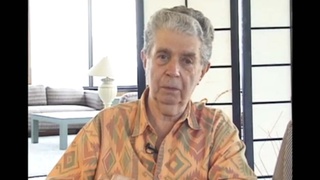Interviews
Treatment of Kibei after return to United States
They were more or less curious because I know... ask me what it say in Japanese, something like that, ask a question, see, so very friendly. But the one not friendly probably stay away from me. But I didn't get any direct insult. I didn't experience, so I never thought of that. But some, well, I think other Kibeis experienced, too. They more or less looked down on it, see. It may have a more education but not in English, in Japanese, so this, as far as knowledge goes, maybe smarter, but then yet, still, Kibei is discriminated, I know.
Date: December 17 & 18, 2003
Location: Washington, US
Interviewer: Alice Ito, Tom Ikeda
Contributed by: Denshō: The Japanese American Legacy Project.









